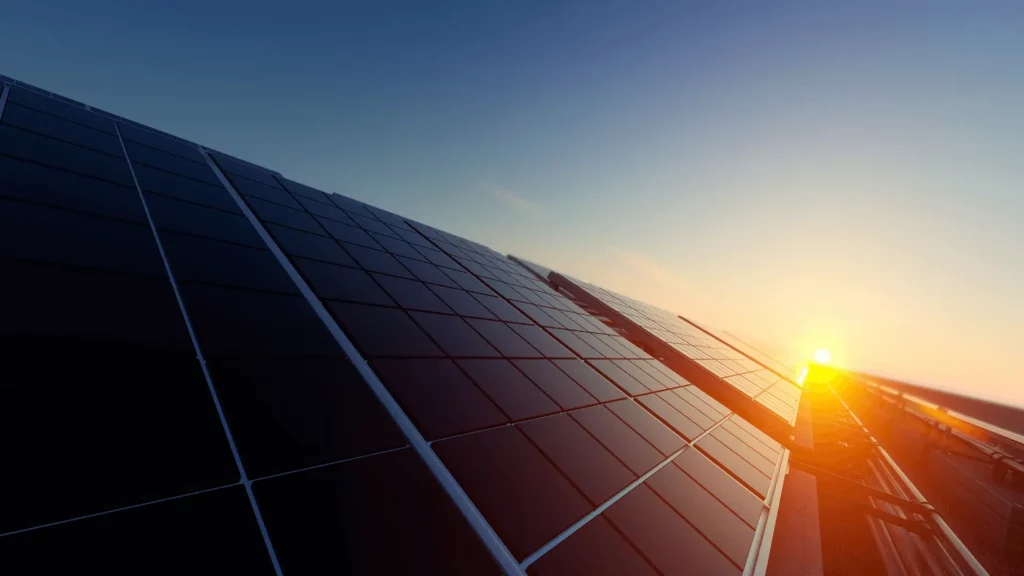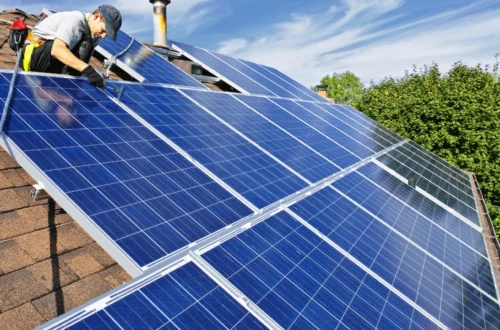How Hot do Solar Panels Get

Do solar panels get hot? How does temperature affect solar panel performance? These are common questions that homeowners considering investing in solar systems often ask. Understanding the impact of heat on solar panels is essential for maximizing their efficiency and ensuring optimal energy production.
When it comes to solar panels, temperature plays a significant role in their performance. In this article, we will dive into the fascinating world of solar panels and explore the relationship between temperature and efficiency. We will cover the ideal temperature range for maximum efficiency, the factors that influence a solar panel’s temperature coefficient, and measures to prevent overheating.
Whether you live in a warm climate or experience hot summers, knowing how temperature affects solar panels can help you make informed decisions about the right solar setup for your specific conditions. So, keep reading to discover the impact of temperature on solar panels and how to harness their full potential even in the heat.
Do Solar Panels Get Hot?
Solar panels can indeed get hot, and temperature plays a crucial role in their efficiency. When exposed to sunlight, solar panels absorb the sun’s energy and convert it into electricity. However, as the panel temperature rises, their overall performance can be affected.
High temperatures can lead to a decrease in solar panel efficiency. This is due to a concept called the temperature coefficient, which measures how a solar panel’s output changes with temperature. Each solar panel has a specific temperature coefficient, and excessively high temperatures can cause the panel’s efficiency to drop.
It’s important to note that solar panels are designed to withstand high temperatures, but excessive heat can still have an impact on their performance. Therefore, it’s essential to understand the relationship between temperature and solar panel efficiency to optimize their output.
Also read: Upgrade Your Home’s Energy Efficiency with These 12 Easy Steps
Temperature Coefficient
The temperature coefficient plays a crucial role in determining the efficiency of solar panels under different temperature conditions. It represents the rate at which the performance of a solar panel changes with temperature variations. Understanding the temperature coefficient is essential for homeowners looking to maximize the energy output of their solar systems.
Solar panels have a negative temperature coefficient, which means their efficiency decreases as temperatures rise. This decrease is due to the nature of the photovoltaic process, where the conversion of sunlight into electricity is less efficient at higher temperatures.
The temperature coefficient is typically expressed in percentage per degree Celsius (%/°C). For example, a panel with a temperature coefficient of -0.4%/°C will experience a 0.4% decrease in efficiency for every degree Celsius increase in temperature above the panel’s standard test conditions.
It’s important to consider the temperature coefficient when selecting solar panels, especially in regions with high ambient temperatures. Panels with lower temperature coefficients will perform better in warmer climates.
By taking the temperature coefficient into account, homeowners can choose solar panels that are better suited to their climate, ensuring optimal energy production throughout the year.
Also read: Increased Energy Efficiency Ultimately Leads to Lower Costs
Factors Affecting Solar Panel Temperature
The temperature of solar panels can be influenced by several factors, which ultimately impact their performance and efficiency. Here are some key factors to consider:
1. Color
The color of solar panels plays a role in temperature regulation. Dark-colored panels tend to absorb more heat from sunlight, which can lead to higher temperatures. On the other hand, light-colored panels reflect more sunlight, reducing heat absorption and keeping temperatures lower.
2. Ambient Temperature
The surrounding temperature affects the heat dissipation of solar panels. In warmer climates, panels may experience higher temperatures due to the hot environment. Conversely, in colder climates, panels may operate at lower temperatures.
3. Direct Sunlight
The intensity and duration of direct sunlight exposure can significantly impact panel temperatures. Panels that receive more direct sunlight may heat up more quickly, potentially affecting their efficiency.
Considering these factors is crucial to understanding how temperature can affect solar panel performance. By taking these variables into account, you can optimize your solar system for maximum efficiency and long-term sustainability.
Also read: Solar Panels for Tiny House Living: Everything You Need to Know
Overheating Prevention Tips
Preventing solar panel overheating is crucial for maintaining their efficiency and ensuring optimal energy production. Here are some effective tips to keep your solar panels cool:
1. Proper Ventilation
One of the simplest and most effective ways to prevent overheating is to ensure proper ventilation around your solar panels. This allows for better airflow, dissipating excess heat and reducing the risk of damage. Make sure there is enough space between the panels and the roof or mounting structure to promote air circulation.
2. Choose the Right Solar Panel
Selecting the appropriate type of solar panel for your climate can make a significant difference in preventing overheating. Some panels are specifically designed to handle high temperatures better than others. Consider panels with features like advanced heat dissipation technology or high-temperature tolerance for better performance in hot climates.
3. Opt for Light-Colored Roofing
If you are installing solar panels on your roof, opting for a light-colored roofing material can help reduce heat absorption. Dark-colored roofs tend to absorb more heat, which can increase the temperature of the solar panels. Light-colored roofs reflect more sunlight, keeping the panels cooler and improving their efficiency.
4. Maintain Clear Surroundings
Keep the area around your solar panels free from any obstructions that could block airflow and trap heat. Regularly trim any nearby vegetation, clear away debris, and avoid placing objects that cast shadows on the panels during peak sunlight hours.
5. Monitor Panel Temperature
Stay vigilant and monitor the temperature of your solar panels regularly. Many solar systems come with built-in monitoring tools that allow you to track the temperature. If you notice a significant increase in temperature, it may be an indication of a potential issue. Promptly seek professional assistance to address any problems and prevent further damage.
Remember, by taking the necessary steps to prevent overheating, you can ensure that your solar panels operate at maximum efficiency and continue to generate clean energy for your home or business.
Also read: How Long Does It Take To Install Solar Panels: A Comprehensive 2023 Guide
Choosing the Right Solar Setup
When it comes to selecting the right solar setup, considering temperature conditions is crucial for maximizing efficiency and performance. Here are some factors to keep in mind:
1. Panel Efficiency
Opt for solar panels with higher efficiency ratings as they can better withstand temperature variations. Efficient panels maintain their power output even at higher temperatures, ensuring optimal energy production.
2. Heat Dissipation
Look for solar panels with effective heat dissipation mechanisms. Panels with advanced cooling features, such as backside ventilation or integrated heat sinks, are designed to dissipate excess heat and maintain their efficiency.
3. Temperature Coefficient
Consider the temperature coefficient of the panels. A lower temperature coefficient indicates that the panel’s performance doesn’t degrade significantly in high-temperature conditions. Aim for panels with a low temperature coefficient for better performance in warmer climates.
4. Installation Location
Choose an appropriate installation location for your solar panels. Avoid placing them in areas that receive excessive direct sunlight, as this can lead to overheating. Providing some shade or using tilt mounting can help regulate the temperature of the panels.
By considering panel efficiency, heat dissipation, temperature coefficient, and installation location, you can choose the right solar setup that will perform optimally in your specific temperature conditions. Remember, consulting with a professional in solar installations can also help you make the best choice for your needs.
Also read: Can You Put Solar Panels On A Metal Roof?
Wrapping Up
Understanding the impact of temperature on solar panels is crucial for homeowners considering investing in solar systems. Solar panels can indeed get hot, and temperature plays a significant role in their efficiency. Factors such as temperature coefficient, color of the panels, ambient temperature, and direct sunlight affect their performance.
To ensure optimal efficiency and prevent overheating, proper ventilation is essential. Additionally, selecting the right type of solar panels for your specific climate conditions is crucial. By choosing the best-suited solar setup based on temperature conditions, you can maximize energy production and harness the full potential of solar energy.
Also read: Why You Should Consider Solar Energy for Your Home | Advantages of Solar Energy
Investing in solar panels is a sustainable and environmentally friendly choice. By considering temperature factors and implementing proper measures, you can make the most of your solar system and contribute to a greener future.





